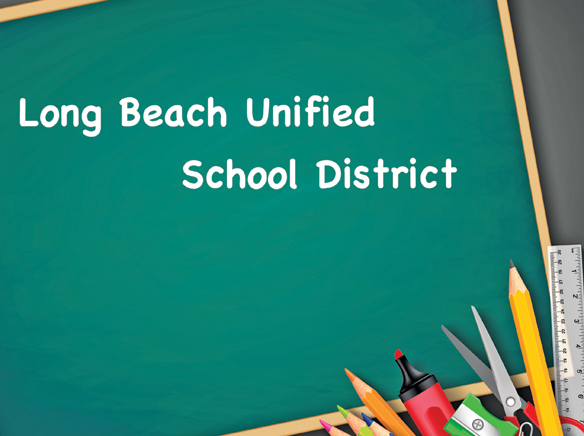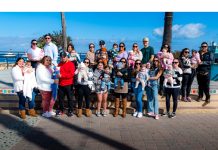District employees eligible for vaccine as early as Jan. 25
Long Beach Unified School District released a statement regarding the move to return to in-class instruction. The district is again reaching out to families in the district with a survey on preferences to how they would like to have their children transition back to the classrooms.
District Superintendent Dr. Jill Baker addressed the recent developments with a video message, in which she referenced Governor Gavin Newsom’s recent “California’s Safe Schools for All Plan,” which was presented on Dec. 30. Prior to the release of the plan outline, Baker noted that the district had already been working on some of the guidelines.
“We’ve already addressed a number of the components for the plan,” Baker said.
One of the main priorities of Newsom’s plan included the vaccine. According to the districts release, starting as early as Jan. 25, LBUSD employees and educators will be eligible to receive the first dose of the Moderna vaccine. The district has been working with the City of Long Beach and the city’s Health Department in planning for the first round of vaccinations for district employees. The collaboration between the organizations is expected to help activate the process as quickly as possible.
“While vaccinating enough people will take time, the effort is a crucial step toward reopening schools for in-person learning as soon as possible,” the district release stated.
Baker also noted that the district has been working with the teacher’s association to develop viable plans for returning to in-class instruction. She said the cooperative work between the district and teacher’s groups have been instrumental in preparing the transition, after a long, trying delay.
“I am highly aware of the exhaustion that has set in for our staff,” Baker said.
Baker also noted that support from the community, as well as district families has helped shape the plans for returning. In the summer, a family survey was sent out that helped the district understand where families stand on transitioning back to in-class. However, understanding that people’s views and concerns may have changed, the district is currently sending out a new survey and are encouraging families to provide updated feedback.
“This survey data will allow schools to plan for the days ahead and specifically for how many elementary students might return to in-person instruction this year,” the release states.
LBUSD stated in the release that in addition to supporting distance learning, they are also preparing for social emotional support for students, as well as academic services that may be needed to help students overcome the challenges that the pandemic has brought.
“The support of everyone in the LBUSD community is appreciated during this challenging time,” the release stated.
California Department of Public Health Summary: California’s Safe Schools for All Plan
Throughout the course of the COVID-19 pandemic, Governor Newsom has prioritized the health and safety of California’s children and schools. As a father of four, Governor Newsom agrees with parents, educators, policymakers, and pediatricians that in-person is the best setting to meet not only the core learning needs of students, but also their mental health and social-emotional needs. It’s especially important for our youngest kids, students with disabilities, and those already disproportionately impacted by the pandemic. Resuming in-person instruction is critical for kids, families, and communities throughout the state.
The safety of staff and students is foundational. With growing evidence that the right precautions can effectively stop the spread of COVID-19 in schools—especially in elementary schools—the Administration is committed to doing everything it can to make in-person instruction in schools safe for students and staff. Developed in partnership with the Legislature, the Administration’s plan focuses on ensuring careful implementation and building confidence by supporting schools to bring back the youngest children (TK-2) and those who are most disproportionately impacted first, then phasing in other grade levels through the spring, as conditions allow. This phased-in approach recognizes that younger children are at a lower risk of contracting and transmitting COVID-19, with core safety measures in place.
At the same time, distance learning will remain an option for parents and students who choose it and for those whose health status does not allow them to return to school in the near term.
Today, Governor Newsom pledges to advance, with the Legislature, California’s Safe Schools for All Plan, built on four pillars:
Funding. The Budget will propose for immediate action in January, $2 billion for the safe reopening of schools beginning in February, with a priority for returning the youngest children (TK-2nd grade) and those who are most disproportionately impacted first, then returning other grade levels to in-person instruction through the spring. These funds will provide approximately $450 per student to school districts offering in-person instruction and will be weighted for districts serving students from low-income families, English learners and foster youth.
Safety & Mitigation. To further ensure health and safety in the classroom, the Administration will focus on implementation of key measures, including testing, PPE, contact tracing, and vaccinations.
• Testing. The Administration will support frequent COVID-19 testing for all school staff and students, including weekly testing at schools in communities with high rates of transmission. For example, any interested public school will be on-boarded to the state-owned Valencia Branch Lab for PCR tests at one-third the market rate and the State will establish a hotline to help schools implement testing.
• PPE. All staff and students in schools are required to wear masks. Furthermore, surgical masks will be recommended for school staff, and the Administration will distribute millions of surgical masks to schools at no cost. The Administration has also enabled schools to leverage state-negotiated master contracts for PPE to reduce costs and streamline supply chains.
• Contact Tracing. Schools will continue to be on-boarded onto the School Portal for Outbreak Tracking (SPOT) to improve collaboration between school and health officials, and members of the state contact tracing workforce will be deployed to improve communication with schools.
• Vaccinations. School staff will be prioritized in the distribution of vaccines through the spring of 2021.
Oversight & Assistance. Dr. Naomi Bardach, a UCSF pediatrician and expert on COVID-19 transmission in schools, will lead the Safe Schools for All Team, a cross-agency team composed of dedicated staff from CDPH, Cal/OSHA, and educational agencies. The Team will provide hands-on support to help schools develop and implement their COVID-19 Safety Plans. These supports include school visits and walk-throughs as warranted, webinars and training materials, and ongoing technical assistance.
Transparency & Accountability. A state dashboard will enable all Californians to see their school’s reopening status, level of available funding, and data on in-school transmissions. Additionally, a web-based “hotline” will empower school staff and parents to report concerns to the Safe Schools for All Team, which will lead to escalating levels of intervention, starting with technical assistance and ending with legal enforcement.
California’s Safe Schools for All Plan provides the support and accountability to establish a clear path to minimize in-school transmissions and enable, first, a phased return to in-person instruction, and then ongoing safe in-person instruction.











